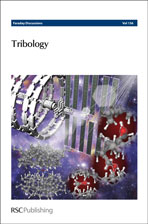Does ultra-mild wear play any role for dry friction applications, such as automotive braking?
Abstract
Nanostructured third body films and/or storage of wear debris at the surfaces of the first bodies are deemed as prerequisites of sliding under ultra-mild wear conditions. Since such features have been observed experimentally on brake pads and discs, attempts were undertaken to study their sliding behaviour by modelling on the nanoscopic scale with an approach based on Movable Cellular Automata (MCA). The model rendered the possibility to study the influence of different nanostructures systematically and to assess the impact of different brake pad ingredients on the sliding behaviour, velocity accommodation and friction force stabilization at a sliding contact. Besides providing a review on previously published modelling results, some additional new graphs enabling better visualization of dynamic processes are presented. Although ultra-mild wear conditions were considered to be essential for achieving the desired tribological properties, transitions to mesoscopic and macroscopic wear mechanisms were studied as well. The final conclusion is that ultra-mild wear and corresponding smooth sliding behaviour play an important role during automotive braking, even though temporarily and locally events of severe wear may cause friction instabilities, surface damage and release of coarse wear particles.
- This article is part of the themed collection: Tribology

 Please wait while we load your content...
Please wait while we load your content...